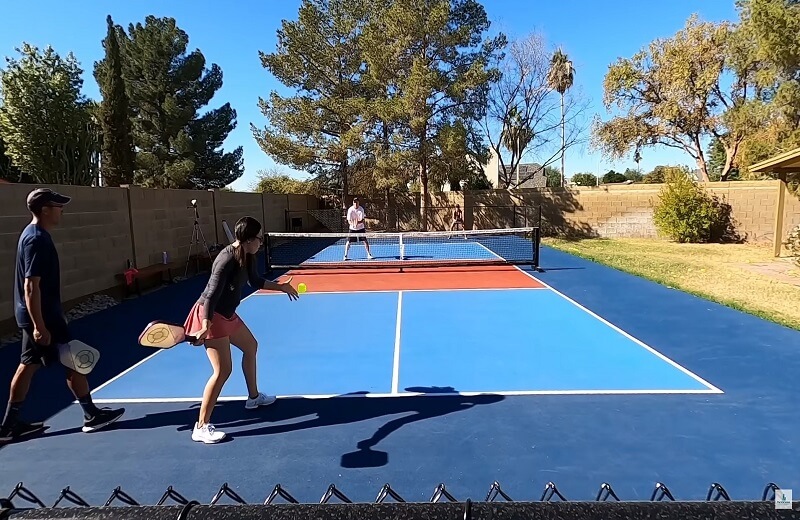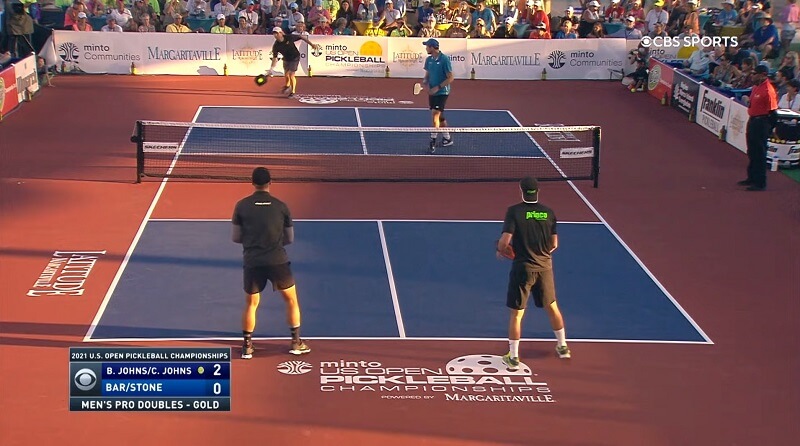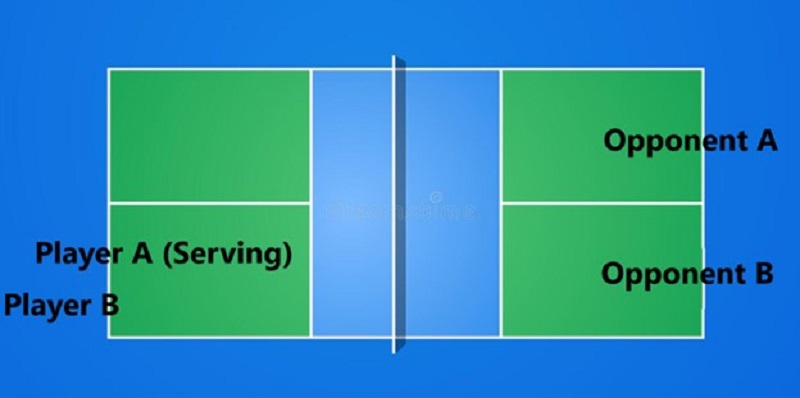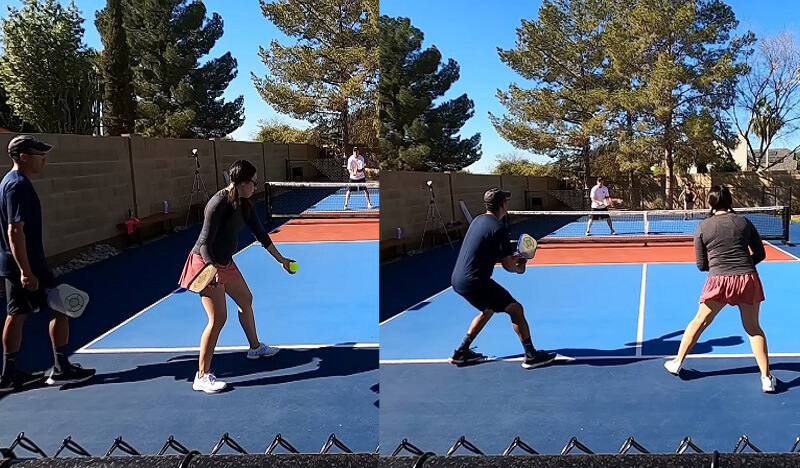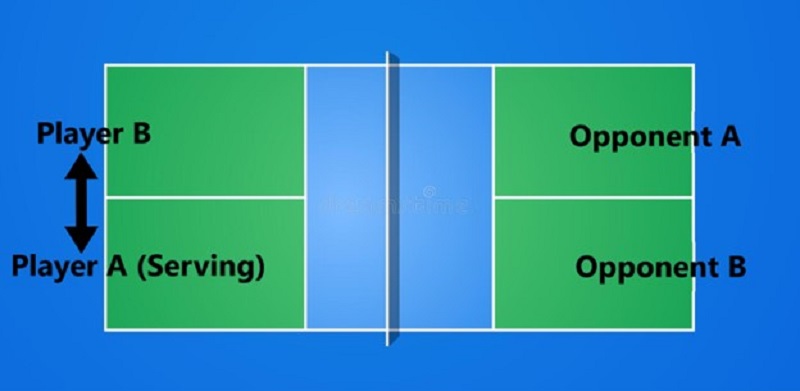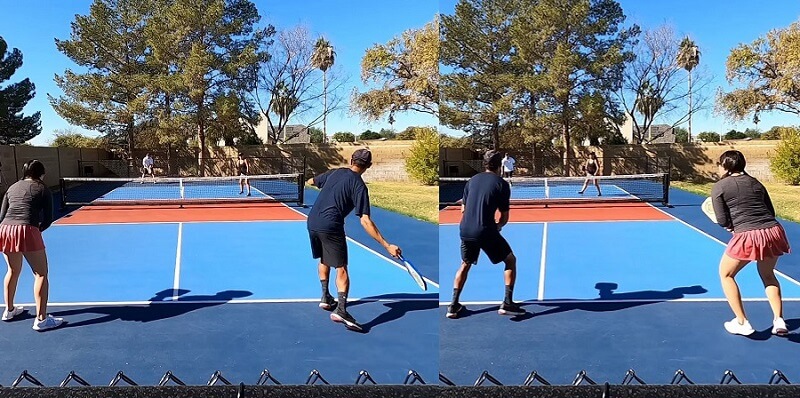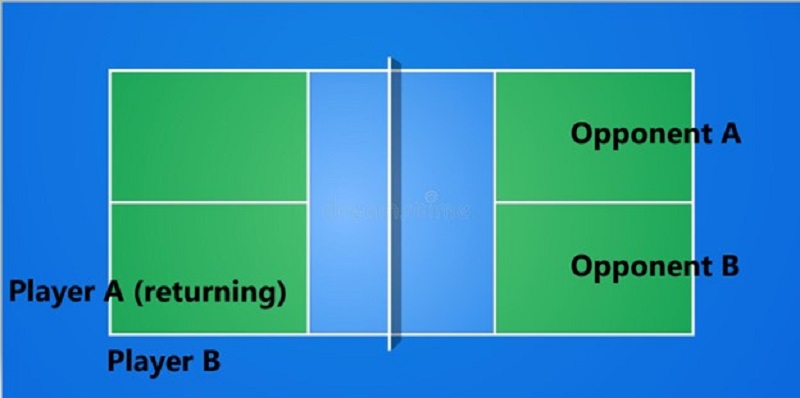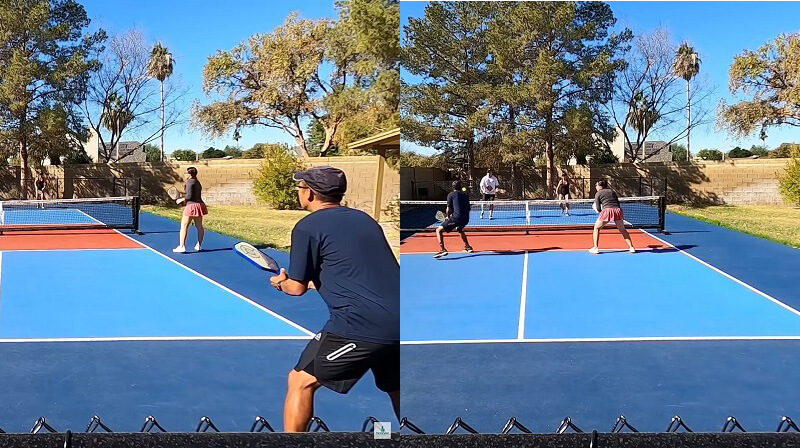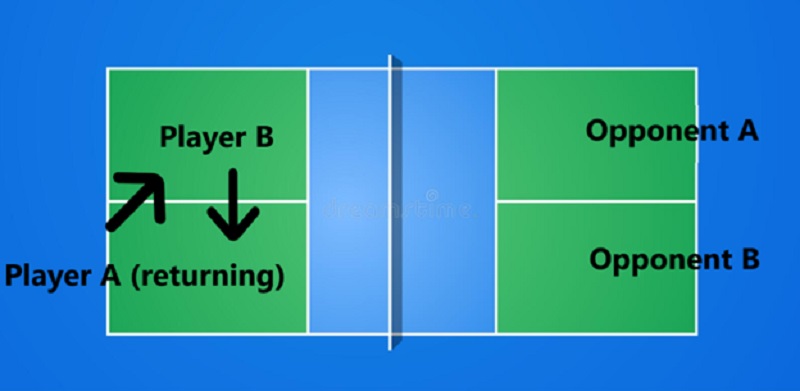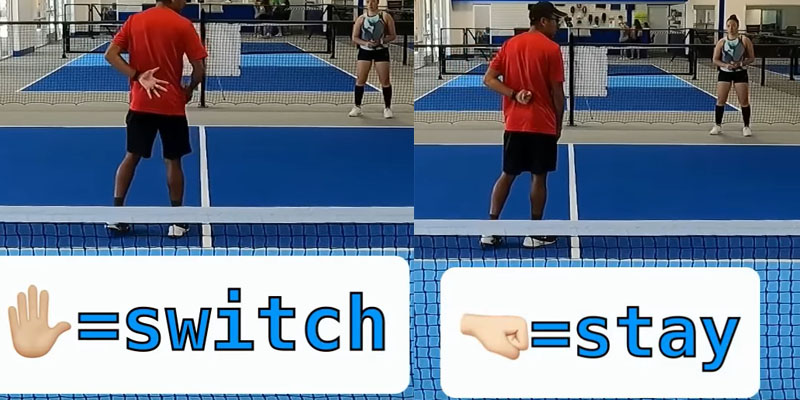What Is Stacking In Pickleball?
Generally, pickleball stacking is a pickleball strategy in which your team is not in a traditional position on serving and returning serve so that your team can end up on a specific or planned pickleball side of the field. In addition, this stack aims to increase the number of forehand and backhand strokes by players in the middle of the court. Different from the traditional game, in this stacking team will start on the same side and after the serve or return is hit later, the team will switch to their desired position.
Why You Should Use Pickleball Stacking?
Using pickleball stacking is the right decision when you and your partner start playing pickleball. There are several tactics or methods you can use in pickleball stacking.
When using stacking, it will be possible for your team to give maximum power to the game. An example is when a player is doing a strong forehand, then stacking can be used to keep the player’s forehand in the middle of the pickleball field. In addition, this will probably be more opportunities for forehand poaching.
Then, when one of the players is left-handed you can use stacking as a guard for both forehands in the middle of the court.
Using pickleball stacking also aims to hide weaknesses from players, such as players who are weak in backhand. Then, players who use stacking aim to maximize the mobility of your team. For example, left-handed players will usually be more agile when on the ad side to cover less agile players in overhead costs.
What Are Pickleball Stacking Rules?
When you play pickleball, usually there are certain rules that you need to obey, this is the same with pickleball stacking. Here are the rules you need to pay attention to in pickleball stacking.
- The first rule that you need to pay attention to is that one of the pickleball players who uses stacking must serve.
- The second rule that you need to pay attention to is that one of the pickleball players must make a return of the serve.
- The third rule that you need to pay attention to is that server players are prohibited from using one foot while on or inside the line when they will serve.
- The fourth rule that you need to pay attention to is that the return of the ball from service must bounce after the third stroke.
Once everything is done then all bets will be void. Then, players can switch positions anywhere while playing.
How To Stacking In Pickleball?
Remember, the main purpose of stacking is for the two players on one team to switch sides in such a way that not only do both members successfully end up on their preferred sides but the opponent team gets confused in the process as well.
There are various ways of stacking when playing pickleball, but the two most common ones are the traditional and switch stacks, and both can be done either when serving or returning. Again, the core reason for stacking is for the two players on a team to switch sides. This can be done relatively easily, as only the correct returner or receiver has to stand on the correct side, while the other member can stand wherever.
When it comes to the common forms of stacking, you can pretty much divide them into two categories, those being stacking on the serve, and stacking on the return.
How to Stack on Serve
First comes stacking on the serve. Let us say that you’re the one serving on the even side while your partner is on the odd side. However, you two want to switch places, something that might be for a wide array of reasons. How do you do it?
Traditional Stack on Serve
The first way the two members can end up on their preferred sides is by pulling off the traditional stack. Before we explain how to do this, there’s one misconception we have to clear. Remember that both players of a team don’t necessarily have to be on different sides of the court during a serve. As long as the server is on the correct side, it’s completely fine.
With that being said, to pull off a traditional stack, the server (Player A) is to stand on their side without any worries, while the other member (Player B) is to stand next to the server. Theoretically speaking Player B can stand wherever they want, but standing next to the server is universally accepted, as otherwise, player B might get in between Player A’s field of vision, or worse, the ball might hit them.
Now, as soon as Player A serves the ball, they slide on over to their preferred side. Meanwhile, since Player B is already on their preferred side, they stay there. Like this, not only do both the players end up on their preferred sides but there’s no confusion between players of the same team either.
Switch Stack on Serve
Next up is the switch stack. While the traditional stack was a quick and easy way of stacking, the switch stack aims to confuse the opponent team as well. Because of this, it’s a little more tricky to pull off.
Basically, as soon as the server is done with his serve, the two players quickly move to their preferred sides. Let us say the server is Player A and the other member is Player B. If Player A is serving from the even side and Player B is standing on the odd side, then as soon as the service is done, Player A slides to the odd side while Player B ends up on the even side.
Again, not only does this make it so both players are able to successfully end up on their preferred place on the court, but the enemy might get confused too. This method is especially useful if the opponent team is targeting a specific player on their return.
How to Stack on the Return
Now that you know two ways of stacking on serve, how would you apply those same stacking methods when returning instead of serving? Although stacking on the return is more tricky and requires good teamwork between both members of the team, when pulled off correctly it’s arguably more useful than stacking on the serve.
Traditional Stack on the Return
Just like how the traditional stack required Player B (the player who wasn’t serving) to stand away from their original starting side when stacking on serve, the same thing applies when stacking on the receive, with the one exception being that this time Player B is to stand outside of the court on Player A’s side (the player who’s returning).
Notice how, in the above image, Player B is standing completely outside of the court? This is because, as mentioned above, as long as the server or receiver is standing on the correct side, it’s all good. Of course, if the receiver is on the odd side then Player B will also move to stand on the opposite side.
As soon as Player A receives the ball, they’re to quickly slide on over to the opposite side. Meanwhile, Player B is to quickly get on the court on the side they’re already standing, and this will lead to a successful stack.
Switch Stack on the Return
Again, if the traditional stack is the quick, easy, but obvious way of stacking, then the switch stack is the unpredictable one. To pull off a successful switch stack, both players of the team are to start off on their own respective sides.
Now, let us say Player A is the player who’s returning from the even side while Player B is standing on the odd side’s non-volley zone. As soon as Player A returns the ball, they’ll quickly come cross court on the odd side’s non-volley zone, while Player B will slide over to the even side.
To add some more confusion into the mix, professional pickleball players also use hand signals to coordinate with each other Of course, if we’re following the above example, then in this case Player B, the one who’s already on the odd side non-volley zone, and as such in the line of sight for Player A, will be the one giving the signal.
Although players usually go with the usual signs (open hand means switch while closed hand means either fake switch or don’t switch at all), some players use different signs like a specific number of fingers up signaling the other player to switch.
When To Utilized Pickleball Stacking?
Stacking is most frequently used to capitalize on a player’s strong points. When a team has a prominent forehand, for example, those who may want to maintain that player in a role where their forehand is still close to the center. This enables the player to take advantage of forehand poaching chances.
Stacking can be utilized to maintain both forehands on the centerline if any of the players is lefthanded. In contrast, when a team with one lefty and one righty enables themselves to be in a role where any player’s forehand is located in the center, their opposition may gain an important benefit during that stage of play.
Stacking can also be utilized to compensate for player flaws. For example, if one’s backhand is weak. Stacking can be utilized to increase mobility. For example, a more nimble player can play just on stacking edge to protect further overheads compared to a less nimble player.
Ending
Once you know more information about stacking, how to stack, and when to use stacking, we hope you can give pickleball stacking a try. When you do stacking, you will never know what you might find when doing pickleball stacking. You need to remember that you can do stacking or not at any dot in the pickleball game. However, when something goes wrong, you can change it.
Read more:
- The Ultimate Guide to Pickleball Singles Strategy: Win Every Game
- The Art of Pickleball Dinking Strategies: Tips and Tricks for Success
- Outmaneuver Your Opponent: Proven Pickleball Banger Counter Techniques

